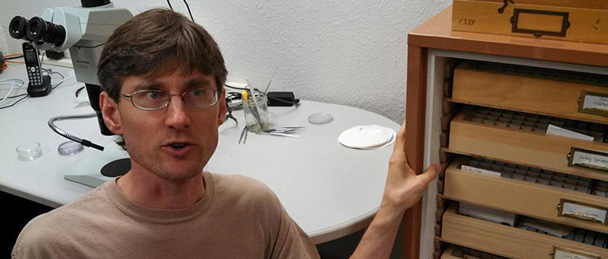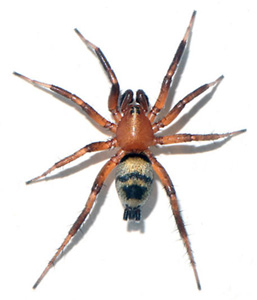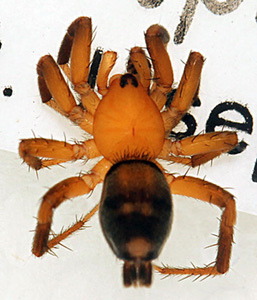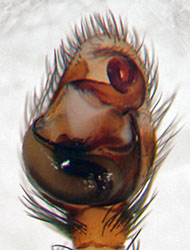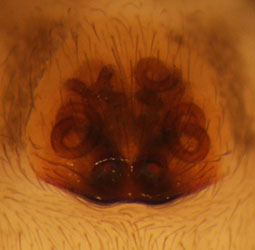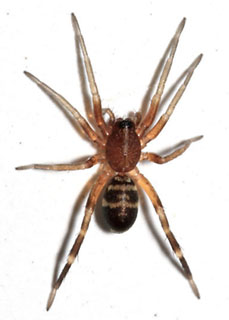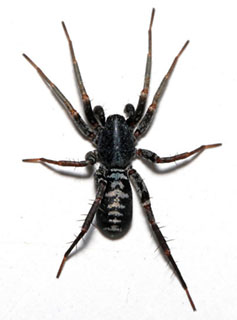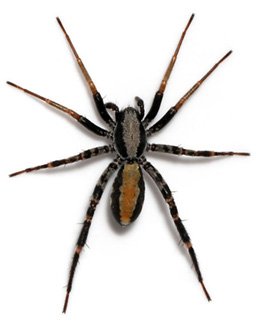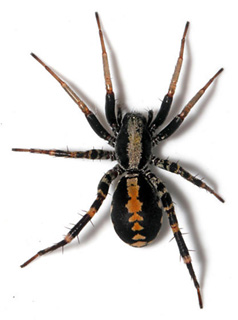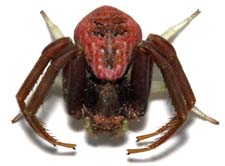 Field Identification Work
Field Identification Work
The wonderful field guides that we have for birds and butterflies have us thinking that we can readily identify animals by comparing them to pictures. This is mostly true for birds and butterflies, but this wasn't always the case for either birds or butterflies. We have historically learned how animals are related by examining their morphology, often by dissecting them. Morphologically similar animals were grouped together with similar names. Once we had groups and names for specimens, we could group and name pictures to create picture-based field guides. Birds and butterflies are well-understood, so they have great picture-based field guides. This is not yet the case with spiders, although there are field guides that will get you good approximate IDs. At this time, most spiders can only be identified to species by examining them under a microscope.
I would like a day to come when we can identify most spiders alive in the field or from photographs. We can do this for many spiders today, but only for a small fraction of all spiders. In fact, if you see a spider that looks exactly like a picture in a book, it may still not be the spider named in the book. You see, different species can look identical. This is true for birds and butterflies as well, but for the most part, we know which birds and butterflies those are and the field guides can warn you. We often don't know whether any other species of spiders might look like the one in the picture, so for the time being, it's not possible to create a field guide to spiders that takes you to species for very many spiders. (However, there are some regions where the spiders are well understood, such as England, where we can come close.)
I'm one of a handful of people who are working to change this for North American spiders. This is a difficult challenge because we preserve spiders in alcohol to prevent them from deforming by dessication. Alcohol often changes the coloration of the spider, and dead spiders don't hold their bodies and legs the way live ones do. We can't simply photograph spiders preserved in collections and expect that the live spiders will look like the photographs. Instead, we have to photograph the spiders live and then preserve them for examination under a microscope. There are exceptions to this general rule, but we often don't know in advance what those exceptions are.
Here is an example of how a specimen can change appearance in alcohol. This is Callilepis imbecilla, a ground spider in the family gnaphosidae. It is a male. The first photo is what the spider looked like live. The second is what the spider looked like after only two days in 80% ethanol.
Most of us engaged in this live-photo identification project post our photos and IDs to BugGuide. (Clicking on images here will take you to BugGuide.) After identifying the spider by taxonomic means, we post photos of the live specimen, filing them under the species name we determined. In this way we slowly build an understanding of what the various species look like when alive. It is sometimes difficult to make a proper identification, so often we also post microscope photos of the features that we relied on. This allows us to get input from others for a more confident determination. This also allows researchers who need scientific reliability to verify the determination for themselves, enabling our work to contribute to scientific papers.
It turns out that the most distinctive feature of each species is its genitalia. Two species that look similar may have dramatically different genitalia. So pretty much all of the scientific papers that describe how species are distinguished do so in terms of the male palp and the female epigynum. This means that if we find a cool spider and want to know what kind it us, then unless it's one of the few well-known species, we have to examine the spider's genitalia under a microscope. This can sometimes be done with live spiders, but usually not. We may even have to dissect the genitalia to see the distinguishing features.
Here is an example palp and epigynum. The first image is the palp of the above male Callilepis imbecilla. The second image is the artsy-looking epigynum of the female Marpissa obtusa jumping spider.
Only adult spiders have genitalia, and spiders can change appearance with each molt. This complicates the task of learning to identify spiders without killing them. We generally cannot identify immature spiders. If we find an immature spider and want to identify it, we have to raise it to adulthood. It can be time-consuming to figure out exactly what a spider needs to survive, and often the spider does not survive. If we want to learn to identify species as immatures, we have to photograph each instar of the spider as it grows. (An "instar" is a period in the life of an arthropod between molts.) Once it becomes an adult, we preserve and identify it to learn what spider we raised.
Here is an example of a spider that changed appearance with each instar as it grew. This is a male Castianeira longipalpa. The first image is the spider at two molts away from adulthood, only 3.2mm long. The second image is of the adult spider at 6mm long. I would not have properly guessed the species by comparing the immature to photos of the adult.
As you can see, the effort to learn what spiders look like live is not a trivial task. Add to the above the effort spent finding spiders, getting good photographs of them, processing the specimens, and processing the photos, and you get a sense of the size of this project. We need all the help we can get to one day realize the vision of reliably identifying spiders from field guides.
Sometimes the effort yields huge surprises. Below are a male and female of species never before seen in Texas. The species keys closest to Castianeira dorsata, but it's possible that it's a species that's new to science, which we call an "undescribed" species. This spider is in central Texas, whereas the next nearest known locations for Castianeira dorsata are central New Mexico, southern Arizona, and Mexico. The genitalia seem to fit the description of Castianeira dorsata, but the spider otherwise does not, so an expert in the group will need to examine the specimens to make a final determination.

